Are you interested in learning about different cultures and their histories? Here are the ethnology museums to visit in Brazil:

Sambadrome Marquês de Sapucaí
Rio de JaneiroThe Sambodrome Marquês de Sapucaí, also known as Sambódromo da Marquês de Sapucaí or simply 'sambodrome', is a significant location in Rio de Janeiro, Brazil. This avenue, surrounded by grandstands, is the venue for the parade of the best samba schools during the city's famous Carnival. It's a vibrant and lively place where the spirit of the Carnival comes alive, with samba schools showcasing their talent and creativity.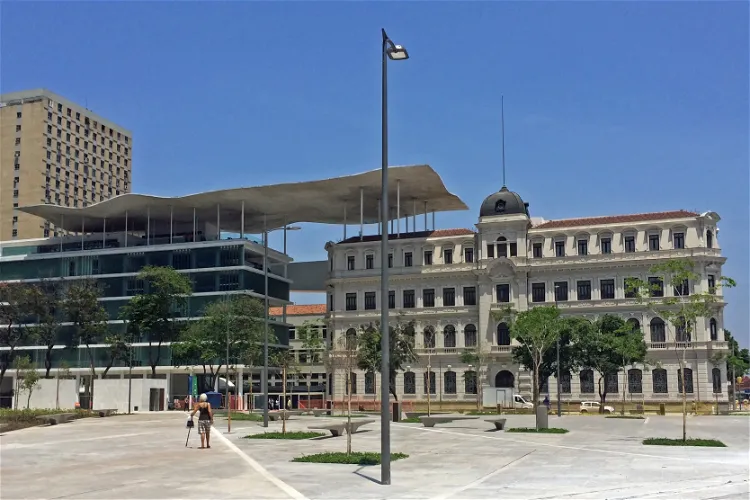
Rio Museum of Art
Rio de JaneiroThe Museu de Arte do Rio (MAR), or Rio Museum of Art, is a significant cultural institution in Rio de Janeiro. It was inaugurated on March 1, 2013, and is maintained through a partnership between the city's public bodies and private initiatives. This collaboration ensures the museum's sustainability and allows it to continue to offer a rich array of art and cultural experiences to its visitors.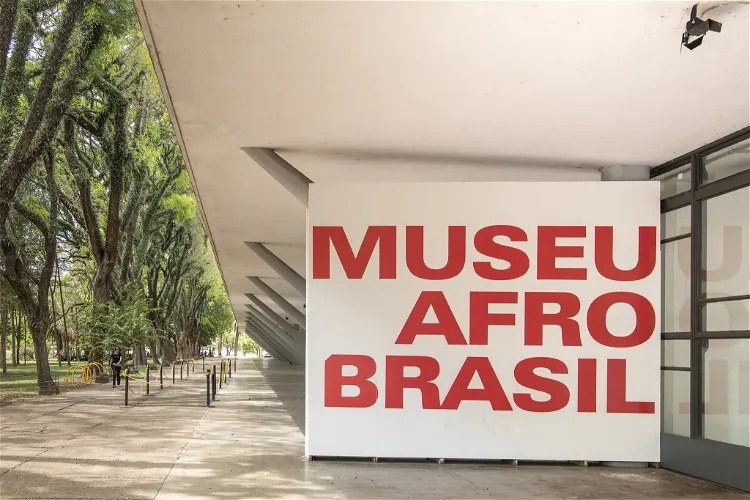
Afro Brasil Museum
São PauloThe Museu Afro Brasil is a historical, artistic, and ethnographic museum that is dedicated to the research, preservation, and exhibition of objects and works that are related to the cultural sphere of black people in Brazil. It is a public institution that is held by the Secretariat for Culture of the São Paulo State and is managed by the Museu Afro Brasil Association. The museum is located in Ibirapuera Park, a major urban park in São Paulo.
Latin America Memorial
São PauloThe Latin America Memorial, located in São Paulo, Brazil, is a cultural, political, and leisure complex that was inaugurated in 1989. This complex serves as a monument to the cultural, political, social, and economic integration of Latin America. It is a place where visitors can immerse themselves in the rich history and diverse culture of Latin America.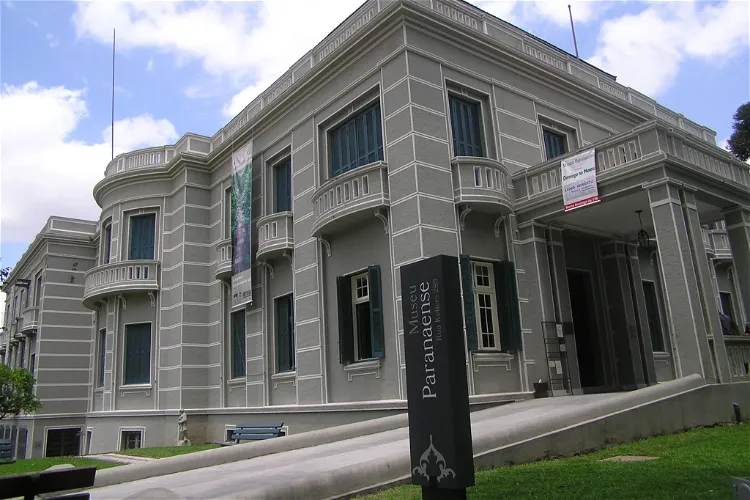
Museu Paranaense
CuritibaThe Museu Paranaense is housed in the São Francisco Palace, a sprawling space covering an area of 4,700 m². The museum not only showcases its historical collection in dedicated exhibition rooms but also hosts temporary exhibitions that delve into various historical and social contexts. Additionally, the museum is equipped with a library, an auditorium, a laboratory, and rooms for courses. It regularly conducts courses, lectures, workshops, and artistic presentations, offering a comprehensive cultural experience for visitors.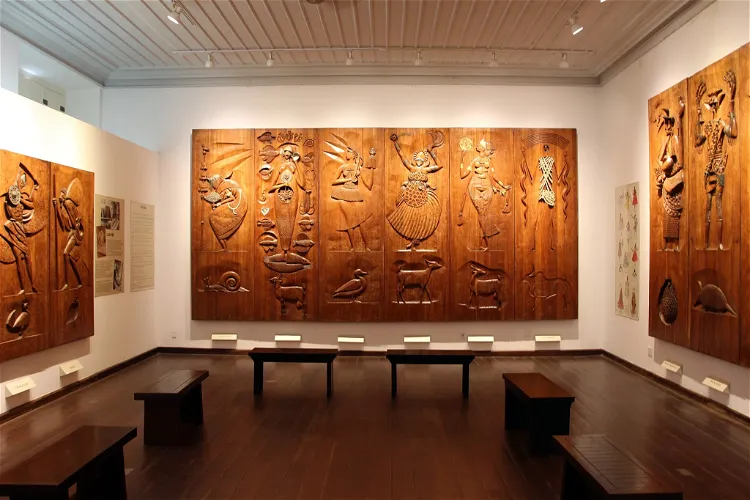
Afro-Brasileira Museum
SalvadorThe Afro-Brazilian Museum, also known as Mafro, is an ethnographic museum situated within the Faculty of Medicine at the Federal University of Bahia in Salvador de Bahia, Brazil. This location offers a unique blend of cultural and academic significance, making it a fascinating destination for tourists interested in the rich Afro-Brazilian heritage.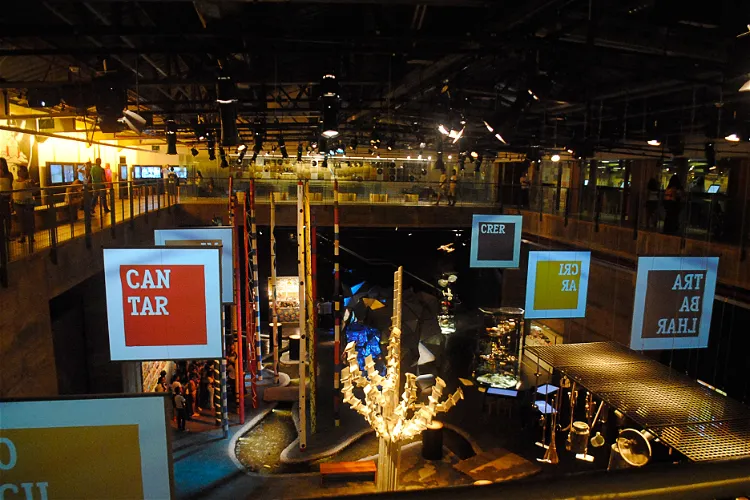
Museu Cais do Sertão
RecifeThe Museu Cais do Sertão is an interactive museum dedicated to the culture of Sertão and the works of Luiz Gonzaga. It is located in the city of Recife, the capital of Pernambuco in Brazil. The museum offers a unique blend of traditional and innovative exhibits, providing visitors with an immersive experience into the rich and diverse culture of Sertão.
Colonial Family Museum
BlumenauThe Colonial Family Museum in Blumenau is a unique space that combines art, history, and memorial elements. It was established with the help of objects donated by Edith Gaertner, a former actress and the heiress of Hermann Bruno Otto Blumenau, a German pharmacist. This connection to a prominent local figure adds a personal touch to the museum's collection and provides a deeper understanding of the city's history.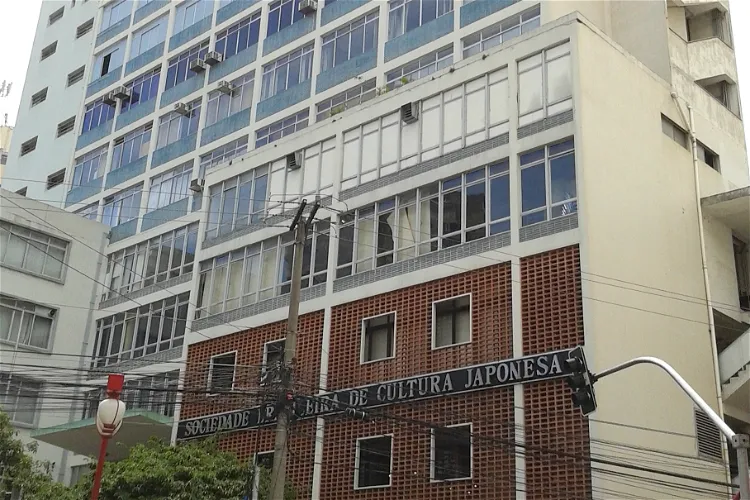
Museu Histórico da Imigração Japonesa no Brasil
São PauloThe Historical Museum of Japanese Immigration in Brazil, situated in the Liberdade neighborhood in the city center of São Paulo, was inaugurated on June 18, 1978. The museum was established by the Brazilian Society of Japanese Culture to commemorate the 70th anniversary of Japanese immigration to Brazil. It boasts a collection of over 97,000 historical items, including photos, films, and videos.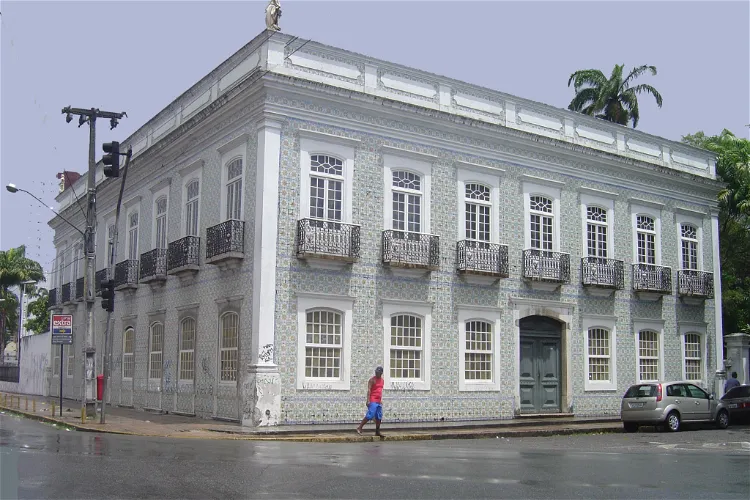
Abolition Museum
RecifeThe Abolition Museum, situated in Recife, the capital of Pernambuco, Brazil, is a unique institution that focuses on a significant part of the country's history. It is one of the few museums in Brazil that provides an in-depth exploration of the abolition of slavery, making it a unique destination for those interested in understanding this crucial period in Brazilian history.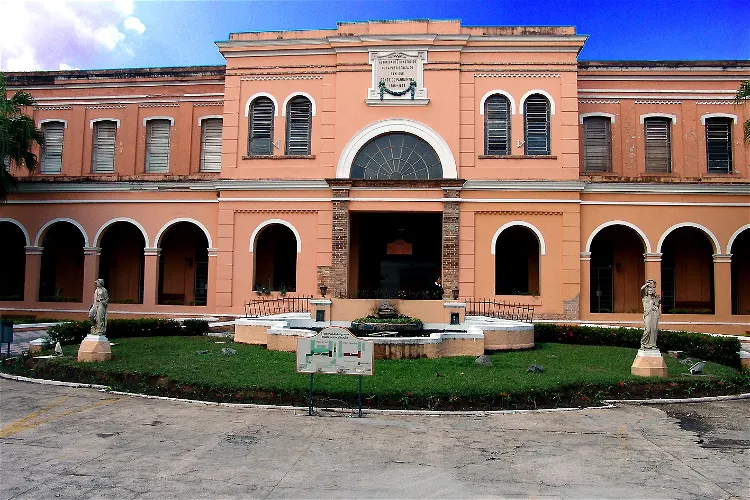
Immigration Museum of the State of São Paulo
São PauloThe Immigration Museum of the State of São Paulo is situated in the Mooca neighbourhood, a vibrant area in the eastern part of São Paulo, Brazil. This location is easily accessible and offers a unique cultural experience, being a part of the city's rich history and heritage.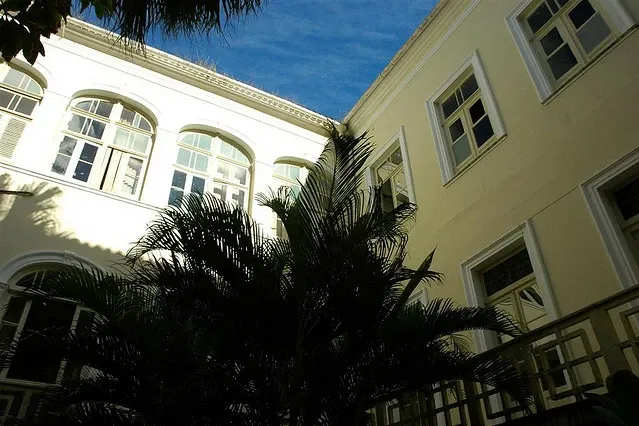
Museu de Arqueologia e Etnologia da Universidade Federal da Bahia
SalvadorThe Museu de Arqueologia e Etnologia (MAE) is situated in the vibrant city of Salvador. Specifically, it can be found at the Largo Terreiro de Jesus, housed within the building of the Faculty of Medicine of the Federal University of Bahia, in the historic district of Pelourinho. This location is not only central but also steeped in history, making it an interesting destination for tourists.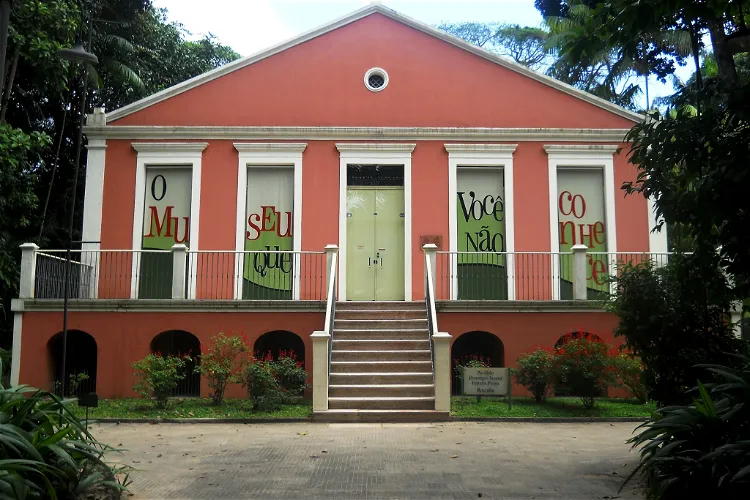
Museu Paraense Emílio Goeldi
BelémThe Museu Paraense Emílio Goeldi promotes science through various facilities. It houses a natural history museum, a botanical garden, and a zoological park. Additionally, the museum manages a scientific research station in the Amazon forest, known as the Estação Científica Ferreira Penna. These facilities offer a comprehensive insight into the biodiversity of the Amazon basin.
Museu do Homem do Nordeste
RecifeThe Museu do Homem do Nordeste is a Brazilian museum situated in Recife, the capital city of Pernambuco. This museum is a federal institution linked to the Joaquim Nabuco Foundation and the Ministry of Education. It offers a unique insight into the diverse cultures of the region, including black, indigenous, and white cultures, from their origins to their current forms and mixtures that make up what is generally referred to as Brazilian culture.
Mineiro Museum
Belo HorizonteThe Mineiro Museum, located in the city of Belo Horizonte, Minas Gerais, is a significant cultural institution in Brazil. It was inaugurated on May 10, 1982, at the site of the former Mineiro Senate. Today, it is part of the Cultural Circuit Praça da Liberdade project, which is a network of cultural institutions and attractions in the city.
Memorial Minas Gerais Vale
Belo HorizonteThe Memorial Minas Gerais Vale Museum is a cultural and artistic institution located in Belo Horizonte, Minas Gerais. It is dedicated to showcasing the traditions and history of the people of Minas Gerais. This museum provides a unique opportunity for visitors to immerse themselves in the rich cultural heritage of the region.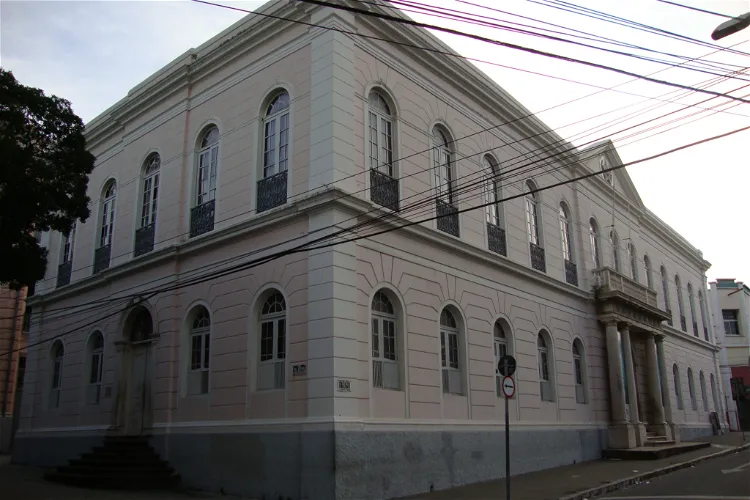
Ceará Museum
FortalezaThe Ceará Museum, situated in the city of Fortaleza, is home to an extensive collection of over 13,000 pieces. These pieces are distributed across three significant collections that narrate the history of Ceará. The collections include Paleontology, Archaeology/Indigenous Anthropology, and Furniture. These collections provide a comprehensive insight into the region's past, making it a valuable destination for those interested in history and culture.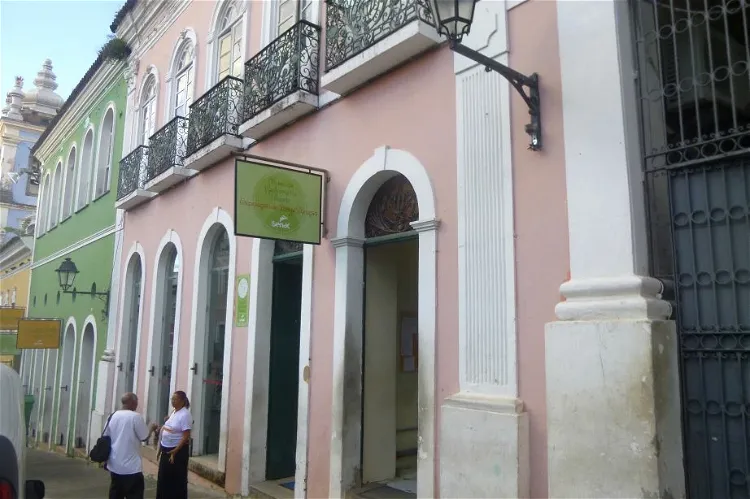
Museu da Gastronomia Bahiana
SalvadorThe museum specializes itself in promoting the local Brazilian culinary specialties. A very enlightening visit for any gourmet.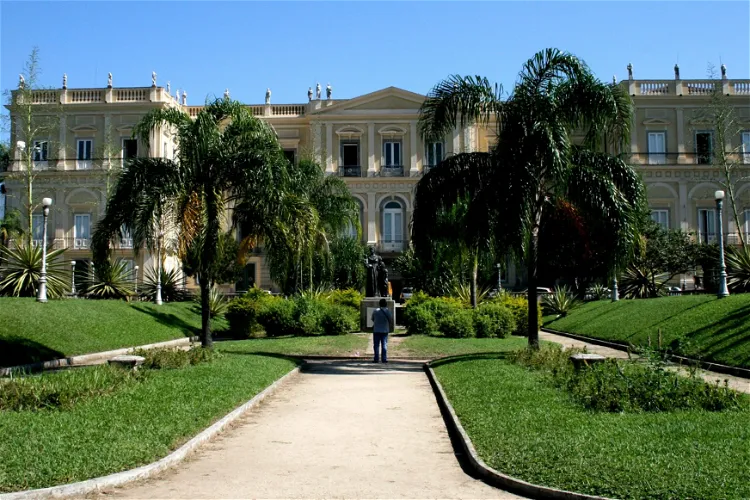
National Museum of Brazil
Rio de JaneiroThe National Museum, known as Museu Nacional in Portuguese, is situated in the Quinta da Boa Vista area of Rio de Janeiro, Brazil. The museum is under the administration of the Federal University of Rio de Janeiro (UFRJ), one of the country's leading educational institutions. This location offers a unique blend of cultural and educational experiences for visitors.
Museu Nacional de Imigração e Colonização
JoinvilleThe Museu Nacional de Imigração e Colonização, located in Joinville, in the north of Santa Catarina, is a significant repository of historical memories and objects related to immigration in the South of Brazil. The museum's collection provides a comprehensive insight into the historical process of immigration and colonization in the region.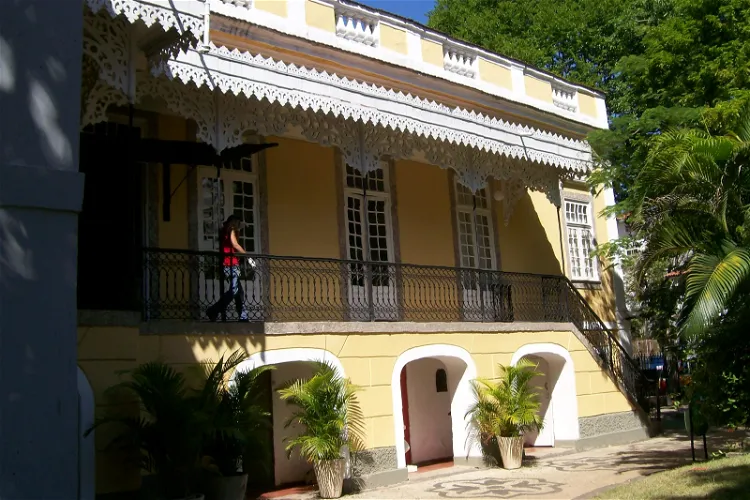
The Museum of the Indigenous Populations
Rio de JaneiroThe Museo del Indio, also known as the Museum of the Indian, is a public institution located in the city of Rio de Janeiro, Brazil. It is the only official institution in the country that is dedicated exclusively to the indigenous peoples of Brazil. This museum serves as a cultural and scientific agency of the National Indian Foundation and aims to promote a careful and updated image of the indigenous cause, while erasing negative prejudices and stereotypes in Brazilian society about these communities.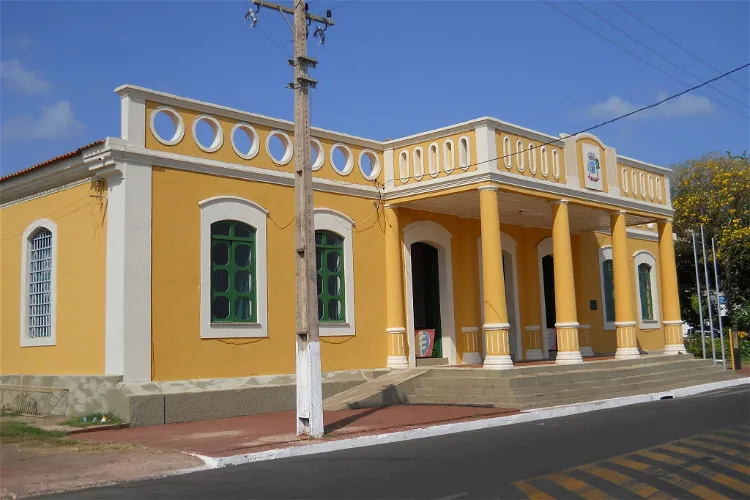
Museu João Fona
SantarémThe Museu João Fona, located in the city of Santarém in the state of Pará, is a historical building constructed between the years 1853 and 1868 by the engineer Marcos Pereira. This museum is the third oldest building in the city, adding to its historical significance.- 23
Habits and Customs Museum
BlumenauThe Habits and Customs Museum is housed in a mansion dating back to 1898, which once belonged to the German Consul Gustav Salinger. This historical building adds to the charm and authenticity of the museum, making it a fascinating place for tourists to explore. 
Memorial do Rio Grande do Sul
Porto AlegreThe Rio Grande do Sul Memorial is a cultural center situated in the heart of Porto Alegre. It is housed in a historic property located in Alfândega Square, which is part of the city's historic center. This location makes it easily accessible for tourists who are exploring the city.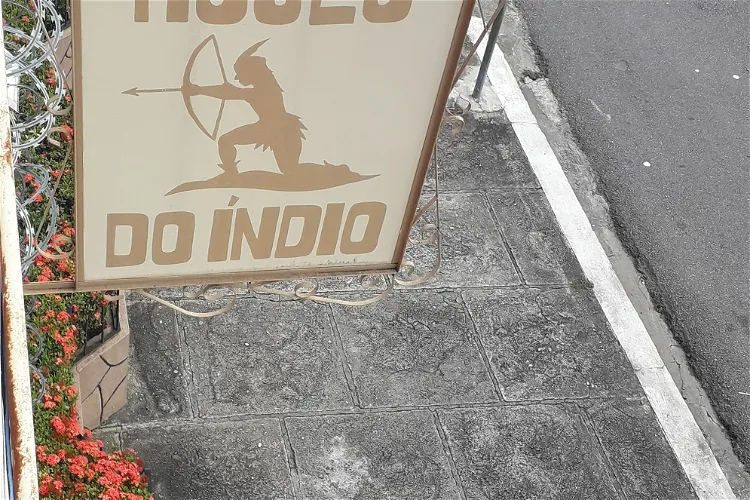
Indian Museum
ManausThe Indian Museum, located in the Amazon city of Manaus, is the largest and most comprehensive museum of indigenous history in Brazil. It provides a unique opportunity to delve into the rich and diverse history of the indigenous tribes of the region. The museum's location in Manaus, a city known for its vibrant culture and natural beauty, adds to its appeal for tourists.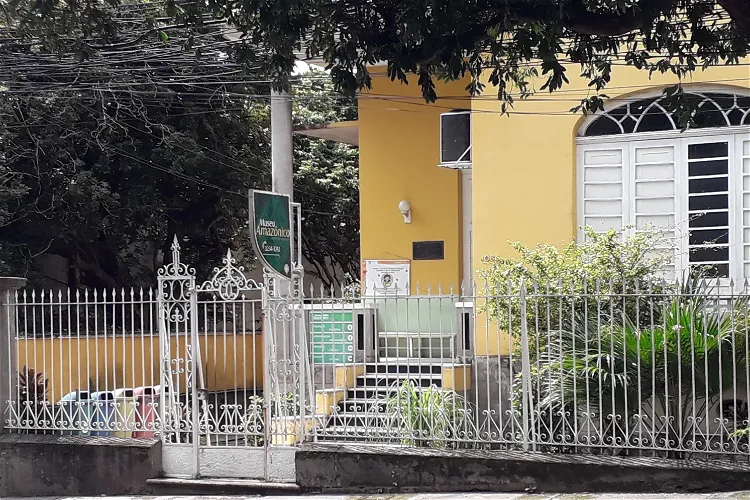
Amazon Museum
ManausThe Amazon Museum, located in Manaus, is a supplementary body of the Federal University of Amazonas. This connection to the university ensures that the museum is backed by academic rigor and research, providing visitors with a comprehensive and accurate understanding of the Amazon and its cultures.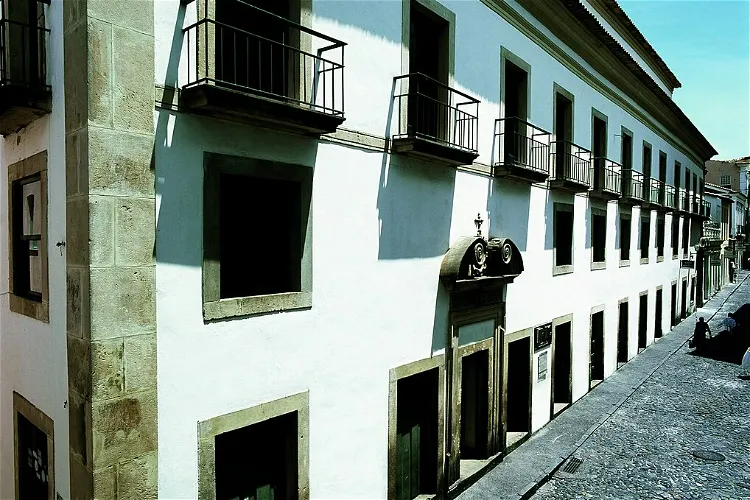
Solar Ferrão
SalvadorSolar Ferrão is a significant historical building located in the heart of Salvador, the capital of the Brazilian state of Bahia. It is situated in the Pelourinho, the city's historic center, and is recognized as part of the national heritage by the National Historical and Artistic Heritage Institute (IPHAN). This location offers tourists a chance to immerse themselves in the rich history and culture of the region.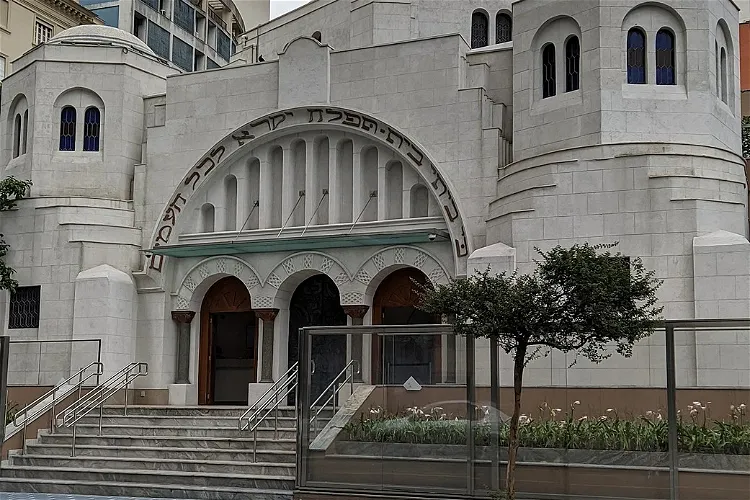
Jewish Museum of São Paulo
São PauloThe Jewish Museum of São Paulo is a cultural institution located in São Paulo, Brazil. It is dedicated to preserving and showcasing the history and culture of the Jewish community in Brazil.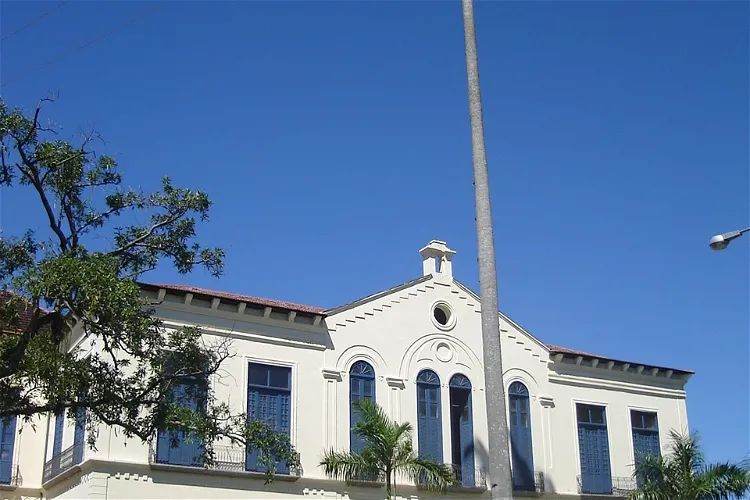
Écomusée du Quarteirão cultural do Matadouro
Rio de JaneiroThe Ecomuseu Comunitário de Santa Cruz is an ecomuseum situated in the historic block of the Matadouro de Santa Cruz, in the Santa Cruz neighborhood of Rio de Janeiro. This location is steeped in history and offers a unique insight into the local culture and heritage.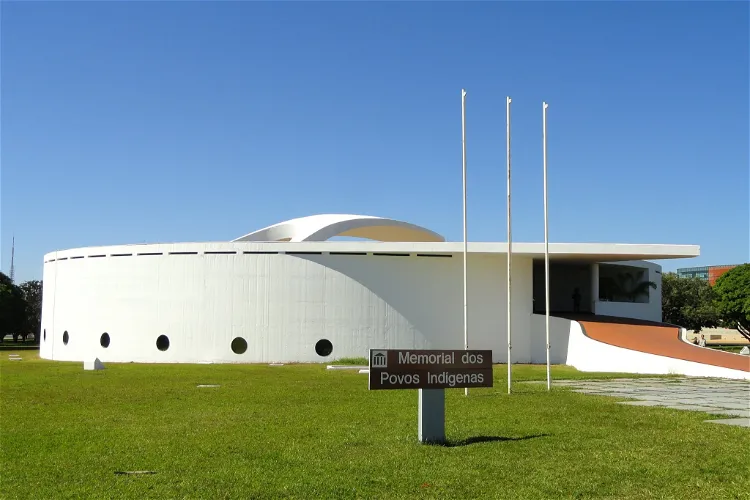
Memorial of Indigenous Peoples
BrasíliaThe Memorial of Indigenous Peoples (MPI) is a museum, cultural center, and research institution located in Brasília. It is dedicated to the preservation and promotion of Brazilian indigenous culture. The museum is situated in the Civic-Administrative Zone of the Monumental Axis, between the JK Memorial and the Buriti Square, opposite the Legislative Chamber of the Federal District.
Museu do Folclore de São José dos Campos
São José dos CamposThe Museu do Folclore de São José dos Campos is situated within the Parque Municipal Roberto Burle Marx, commonly referred to as Parque da Cidade. This park is recognized as a preservation zone due to its rich historical, cultural, and architectural value. The museum, which is part of the Fundação Cultural Cassiano Ricardo (FCCR) and managed by the Centro de Estudos da Cultural Popular (CECP), was established in 1987 to highlight and preserve the region's folklore.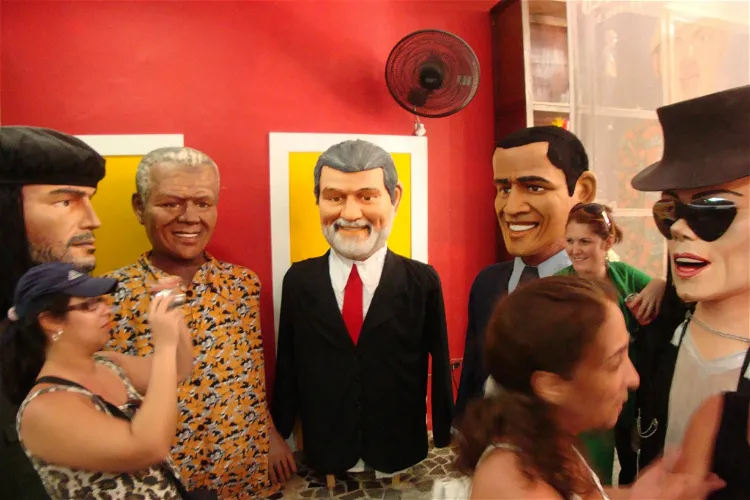
Embassy of Pernambuco - Olinda Dolls Giants
RecifeThe Embassy of the Giant Dolls, also known as 'Olinda dolls', is a permanent exhibition that showcases popular allegories of the Carnival of Pernambuco. These giant dolls are a significant part of the local culture and are a unique attraction for visitors.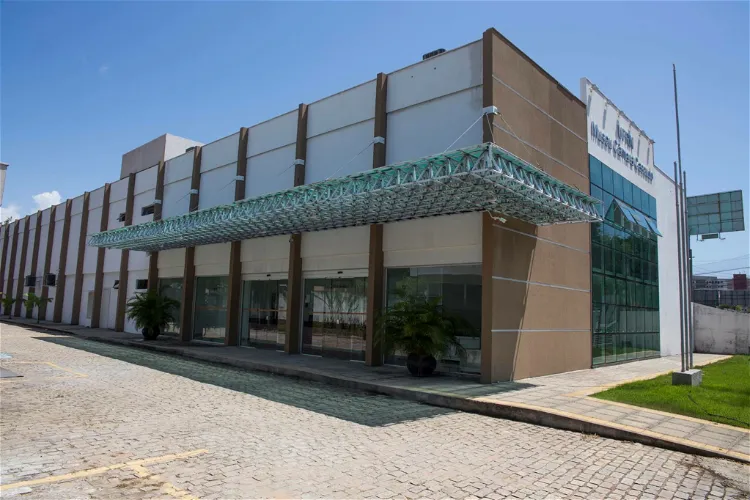
Museum Cascudo-UFRN
NatalA great museum for all those interested in natural sciences and anthropology. It presents many artifacts ranging from fossils to sugar cane.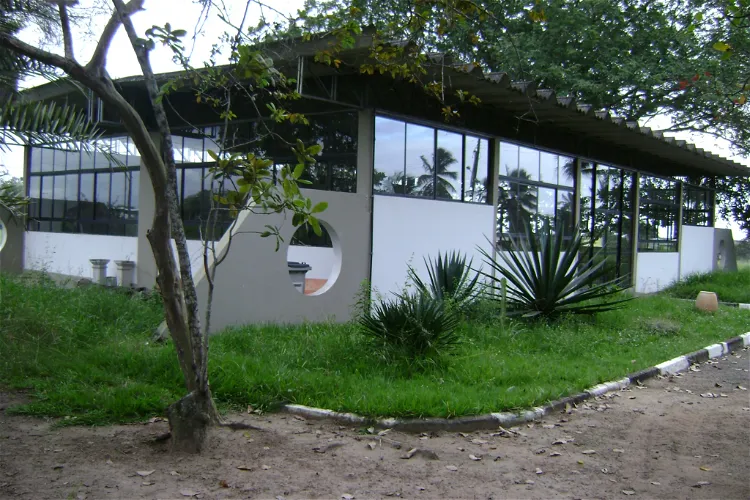
Museum House of the Wild
Feira de SantanaThe Museu Casa do Sertão is situated within the campus of the State University of Feira de Santana (UEFS). This museum, which is part of the university, was inaugurated on June 30, 1978. It's a significant part of the university's cultural and historical landscape, offering visitors a unique insight into the region's past.- 35
The Edison Carneiro Folklore Museum
Rio de JaneiroA spectacular collection of Brazilian folk art - and that doesn't mean just elaborated costumes, but also mechanical sceneries. 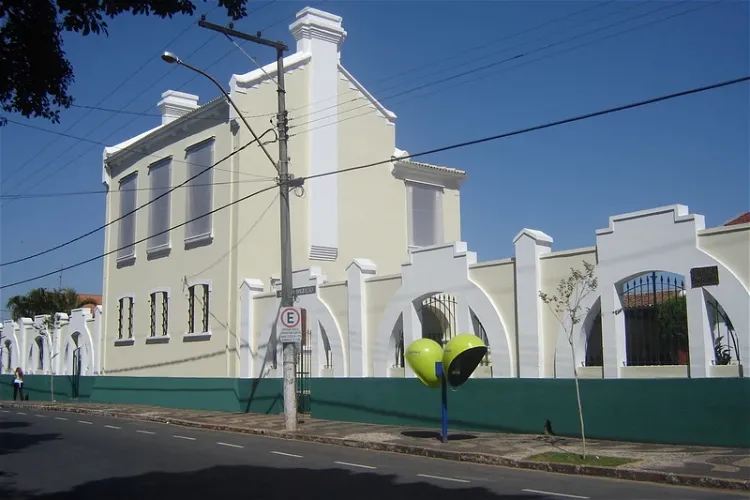
Immigration Museum (Santa Bárbara d'Oeste)
Santa Bárbara d'OesteFollowing the American Civil War, thousands of white people from the southern states of the United States sought refuge in Brazil. They went on to establish the cities of Americana and Santa Bárbara d’Oeste, which are now rich in history and culture.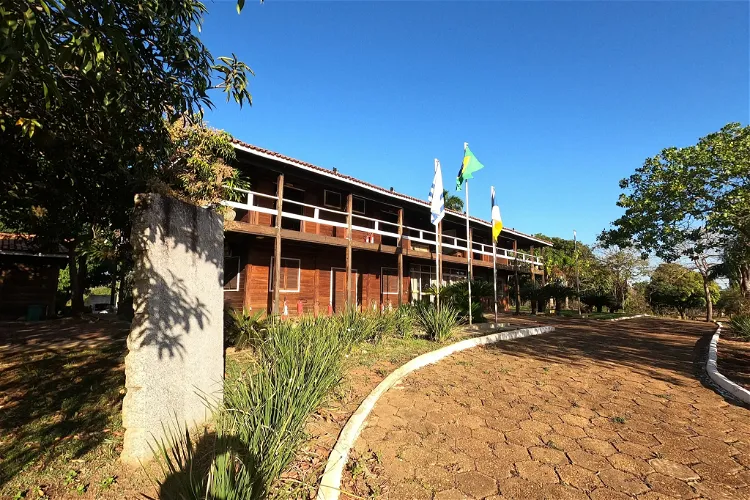
Tocantins History Museum
PalmasThe Tocantins Historical Museum is a state public museum situated in Palmas, the capital city of the state of Tocantins in Brazil. This museum is a significant cultural institution in the region, offering visitors a chance to delve into the rich history and heritage of Tocantins.- 38
Museu do Círio
BelémThe Museu do Círio houses a rich documentary collection that provides insight into the history of popular devotion surrounding the celebration of the Círio de Nossa Senhora de Nazaré. This event is the largest religious manifestation of the State of Pará and one of the largest in Brazil and the world. Celebrated since 1793 in the city of Belém do Pará, it is listed as Brazilian intangible cultural heritage. 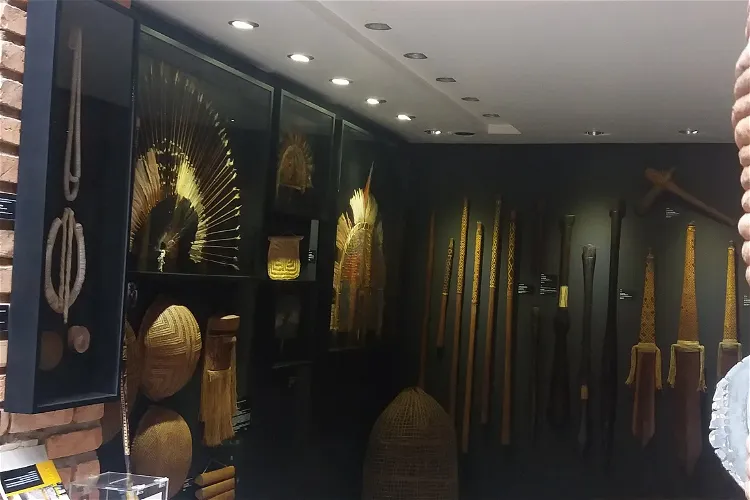
Xingu Museum
São PauloThe Xingu Museum is a private institution situated in São Paulo. It houses a collection of indigenous artifacts that were previously owned by the renowned anthropologist, Orlando Villas Bôas. This unique collection provides a glimpse into the rich cultural heritage of the indigenous communities of Brazil.- 40
Historical and Geographical Institute of Rio Grande do Norte
NatalLocated right in the city center, the institution houses various documents concerning the history of the city as well as the region. 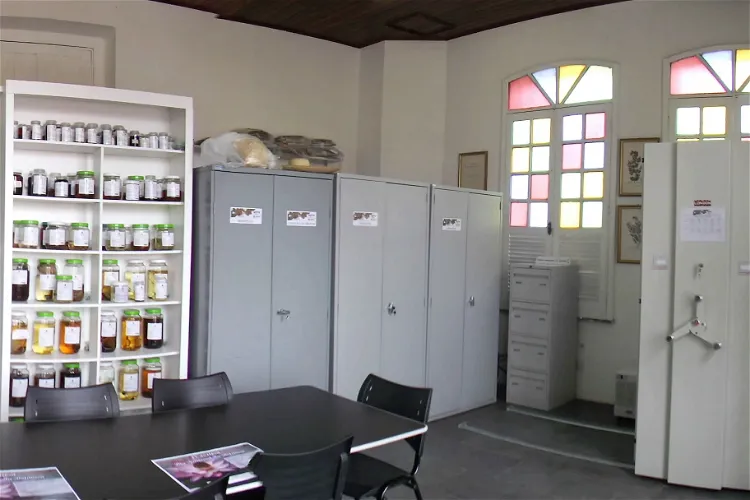
Herbário Profª Drª Marlene Freitas da Silva
BelémThe Herbário Profª Drª Marlene Freitas da Silva (MFS) is a university herbarium located in the city of Belém. It is a part of the State University of Pará (UEPA) and is named in honor of the botanist Marlene Freitas da Silva, a renowned taxonomist from the Amazon specializing in the botanical family Leguminosae. The herbarium is registered under the acronym MFS in the Index Herbariorum.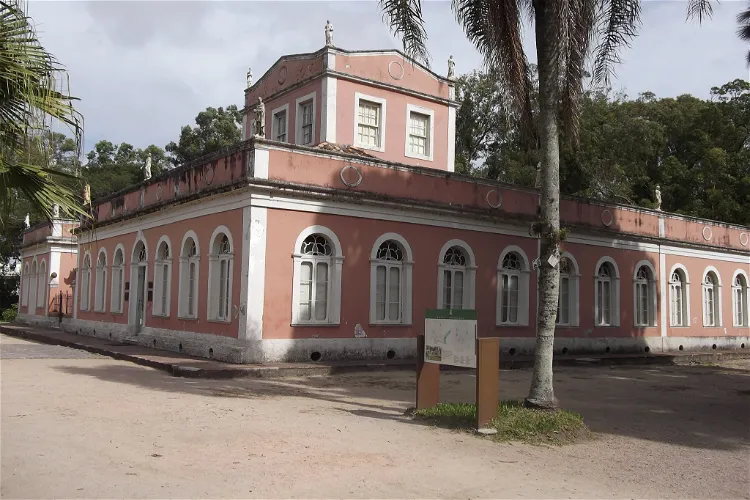
Museu da Baronesa
PelotasThe Museu da Baronesa is housed in an old residence built in 1863, in the former Chácara dos Barões de Três Serros. This historic building adds to the museum's charm and provides a fitting backdrop for the exhibits it contains.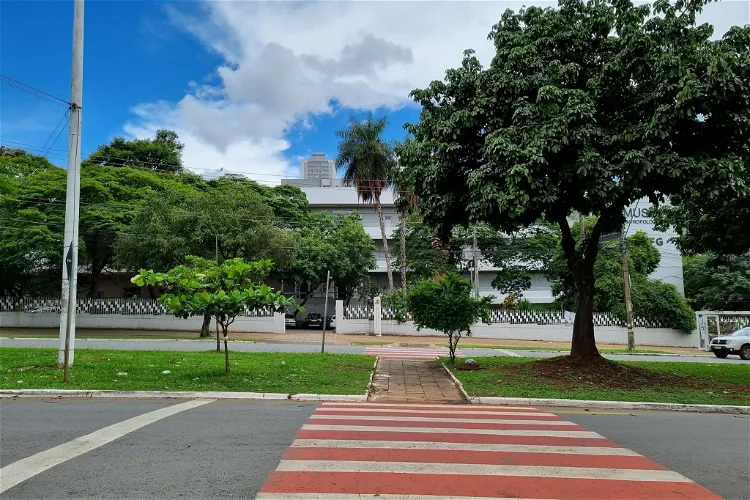
Anthropological Museum DDRH
GoiâniaThe Anthropological Museum of the Federal University of Goiás (UFG) is a significant cultural institution in Brazil. It is situated in Goiânia and is part of the university's extensive network of educational and cultural resources. The museum provides a unique opportunity for visitors to explore Brazil's rich anthropological history.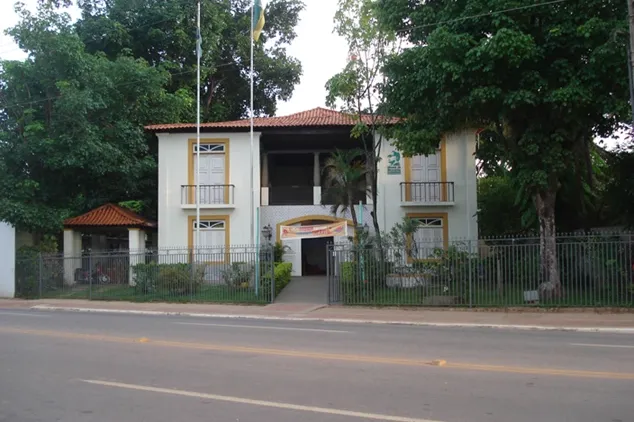
Museo del Caucho
Rio BrancoThe Museu da Borracha, or Rubber Museum, is situated in Rio Branco, the capital city of the Brazilian state of Acre. This museum is a public institution linked to the Elias Mansour Culture and Communication Foundation. It is a significant cultural and historical site that offers insights into the socio-economic history and material culture of Acre.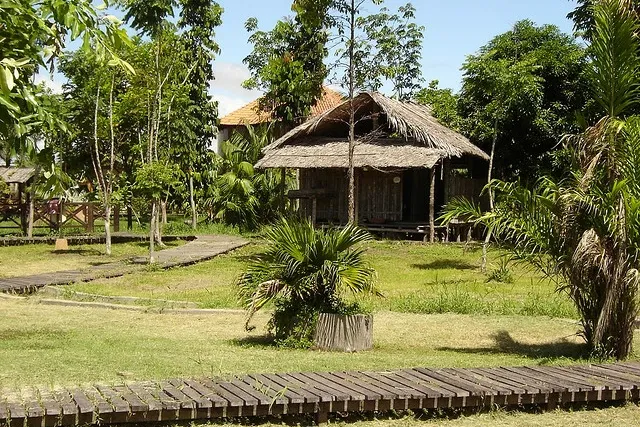
Museu Sacaca
MacapáMuseu Sacaca, officially known as Centro de Pesquisas Museológicas Museu Sacaca, is a cultural and scientific institution situated in Macapá, the capital city of the Brazilian state of Amapá. It is a significant cultural and scientific hub, as well as a popular tourist attraction in the city.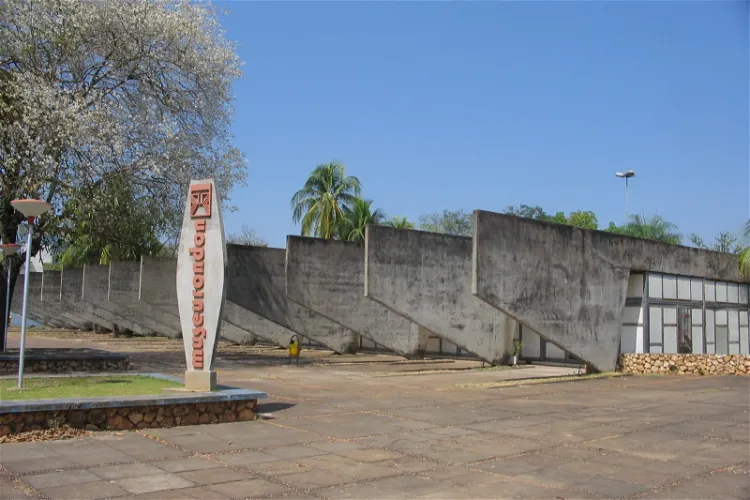
Museu Rondon
CuiabáThe Rondon Museum of Ethnology and Archaeology, located at the Federal University of Mato Grosso (MUSEAR/UFMT), is a non-profit university institution. Its primary focus is on research, teaching, and extension in the fields of Ethnology and Archaeology. This museum provides a unique opportunity for visitors to delve into these academic disciplines and gain a deeper understanding of the region's cultural and historical heritage.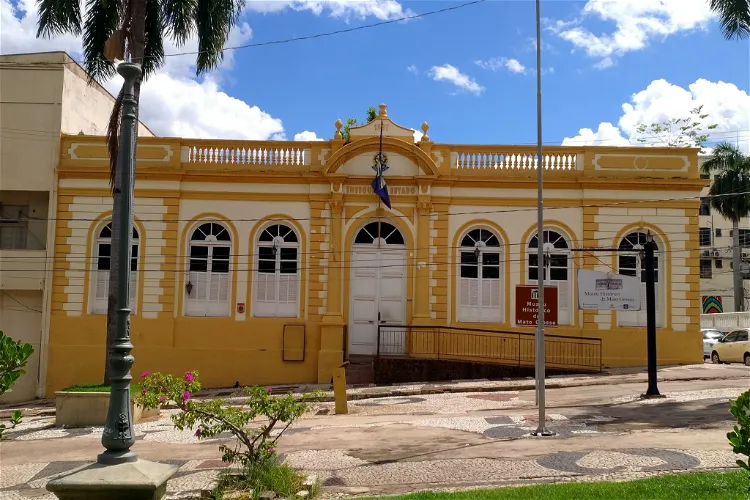
Mato Grosso History Museum
CuiabáThe Mato Grosso History Museum is situated in the city of Cuiabá. The building that houses the museum was originally constructed to serve as the Provincial Treasury of the State. This historical building adds to the charm and significance of the museum, making it a point of interest for tourists visiting the city.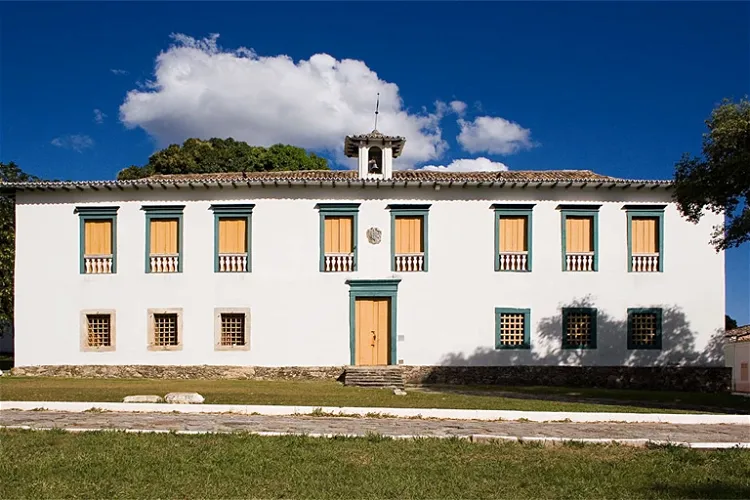
Museu das Bandeiras
GoiásThe Museu das Bandeiras is situated in the City of Goiás, which is approximately 128 kilometers away from Goiânia, the capital of the state of Goiás. This location makes it a feasible day trip for those staying in the capital city.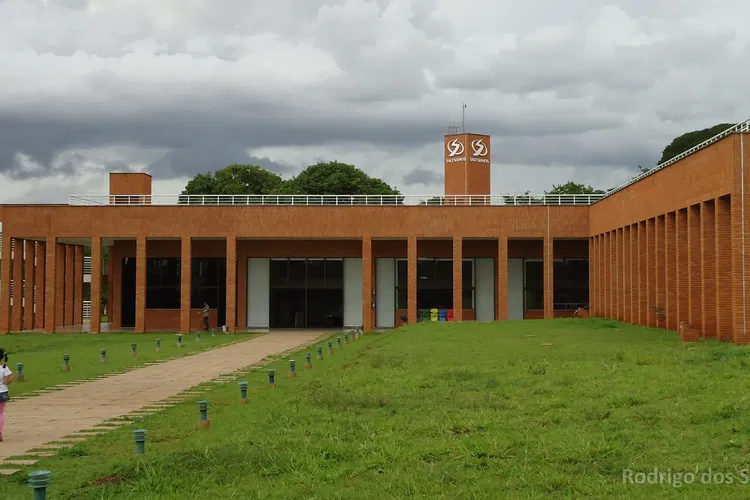
Museu das Culturas Dom Bosco
Campo GrandeThe Museu das Culturas Dom Bosco, also known as the Museu do Índio, is a renowned Brazilian museum situated in Campo Grande, Mato Grosso do Sul. The museum was established in the year 1950 and was officially inaugurated on the 27th of October, 1951 by Salesian priests. It is a significant cultural and historical landmark in the region.
Goiano Museum Zoroastro Artiaga Teacher
GoiâniaThe Zoroastro Artiaga Museum, located in Goiânia, Brazil, is a cultural institution founded in 1946. The museum's collection includes historical documents, ancient utensils, objects related to the Central Brazilian Indians, and artistic pieces. These diverse collections provide a comprehensive insight into the region's rich history and culture.- 51
Museu Histórico e Pedagógico Índia Vanuíre
TupãThe Museu Histórico e Pedagógico Índia Vanuíre boasts a collection of 38,000 items. This includes objects and documents related to the municipality, taxidermied animals, and an ethnographic collection that represents various Brazilian indigenous nations. The Kaingang and Krenak peoples, who inhabit the western region of the state, are primarily represented in this collection. - 52
Museu Fragmentos do Tempo
MataThe Museu Fragmentos do Tempo is situated in the rural area of São José do Louro, which is approximately 5km away from the city center of Mata, in the state of Rio Grande do Sul, Brazil. This location provides a serene and peaceful environment for visitors to explore the museum and its surroundings. - 53
Museu Histórico Farroupilha
PiratiniThe Farroupilha Historical Museum, located in the city of Piratini in Rio Grande do Sul, Brazil, was established on February 11, 1953, during the tenure of Ernesto Dornelles. This museum is a significant cultural institution that provides insights into the rich history of the region. - 54
Museu da Maré
Rio de JaneiroThe Museu da Maré is a unique institution that focuses on recording, preserving, and disseminating the history of the Maré communities in Rio de Janeiro. This includes various cultural, social, and economic aspects of the community's history. The museum's mission is to provide a comprehensive understanding of the Maré communities' rich and diverse history. 
Parque Estadual Vila Rica do Espírito Santo
FênixThe main attraction of the Parque Estadual de Vila Rica do Espírito Santo is the ruins of Villa Rica del Espiritu Santo. These ruins were declared a state historical heritage in 1948. The site offers a glimpse into the past, allowing visitors to explore the remnants of a once thriving settlement.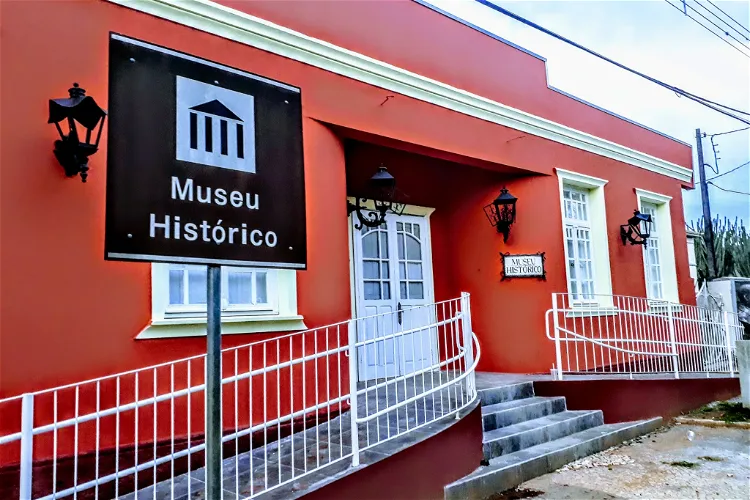
Museu Histórico Desembargador Edmundo Mercer Júnior
TibagiThe Museu Histórico Desembargador Edmundo Mercer Júnior, also known as the Museu do Garimpo, is a historical museum located in the municipality of Tibagi, in the state of Paraná. The museum's primary objective is to disseminate the history of the municipality and the mining activity in the region. It also contributes to historical and documentary studies and research, making it a valuable resource for those interested in the history of the region.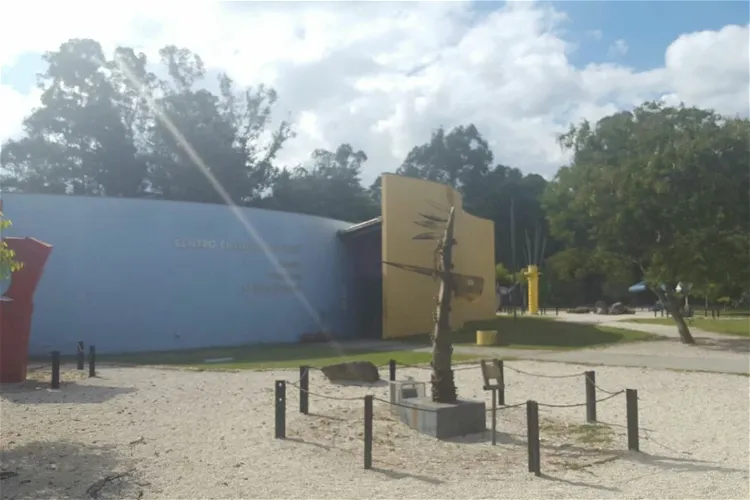
Museu do Tietê
São PauloThe Tietê Museum narrates the story of one of São Paulo's most significant rivers, the Tietê River. This is done through a variety of mediums including documents, objects from the region's indigenous culture, and photographs. Visitors can gain a deeper understanding of the river's history and its impact on the city and its people.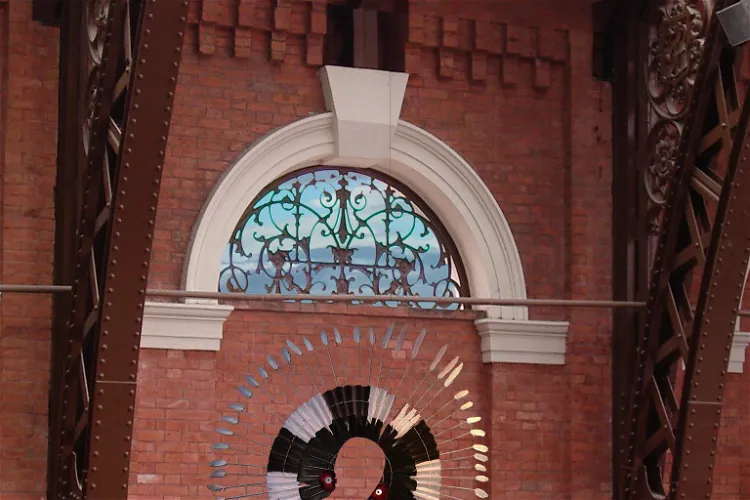
Museum of Archeology and Ethnology
São PauloThe Museum of Archeology and Ethnology is a part of the University of São Paulo. It is situated within the University City Armando de Salles Oliveira. The museum is located in the city of São Paulo, making it easily accessible for tourists visiting the city.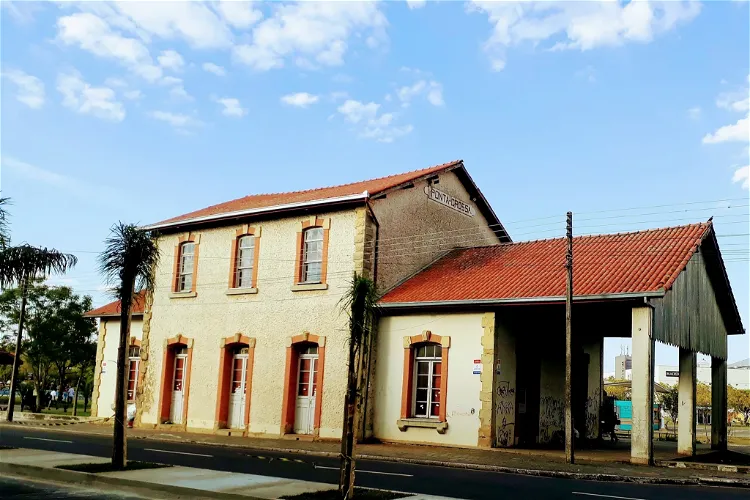
Casa da Memória Paraná
Ponta GrossaThe Casa da Memória Paraná is a museum situated in the city of Ponta Grossa, Paraná, Brazil. It serves as a documentation center, preserving the history of the municipality, the Campos Gerais region, and the state of Paraná. This makes it a significant destination for those interested in the historical and cultural aspects of these regions.
Museum Drover
CastroThe Museu do Tropeiro is situated in Castro, a city nestled in the interior of the state of Paraná. This location provides a unique cultural experience for tourists, as it is away from the bustling city life and offers a glimpse into the history and lifestyle of the region.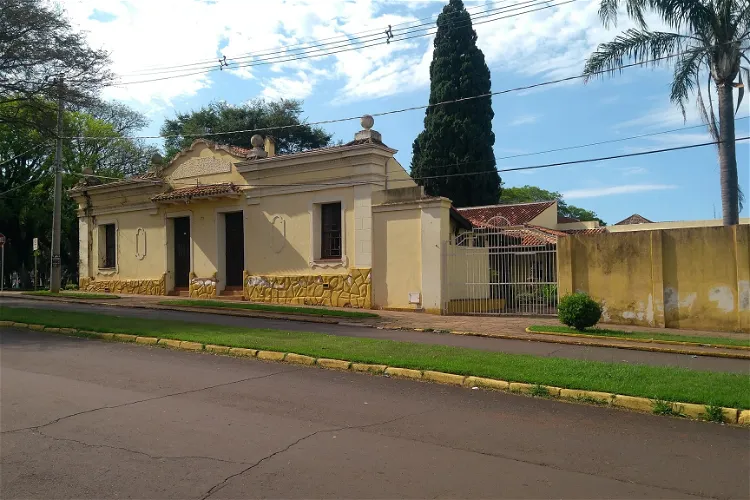
Museu Municipal Dr. José Olavo Machado
Santo ÂngeloThe Museu Municipal Dr. José Olavo Machado is a significant cultural institution in the city of Santo Ângelo. It is conveniently located in the historic center of the city, making it easily accessible for tourists. The museum's proximity to other notable landmarks such as the City Hall and the Angelopolitana Cathedral further enhances its appeal to visitors.
Arquivo Histórico Municipal João Spadari Adami
Caxias do SulThe João Spadari Adami Municipal Historical Archive is a cultural institution located in Caxias do Sul, Brazil. It houses a vast collection of documents, photographs, films, recordings, newspapers, and other materials. The majority of these materials are related to the Italian colonization in the region and the history of Caxias do Sul. This makes the archive an important reference point in the state for those interested in these aspects of history.
Museu Ambiência Casa de Pedra
Caxias do SulThe Museu Ambiência Casa de Pedra is a museum situated in a historic house in the city of Caxias do Sul, Brazil. This museum is dedicated to recreating the domestic lifestyle of the early Italian settlers in the city. It is an interesting place to visit for those who are interested in history and culture.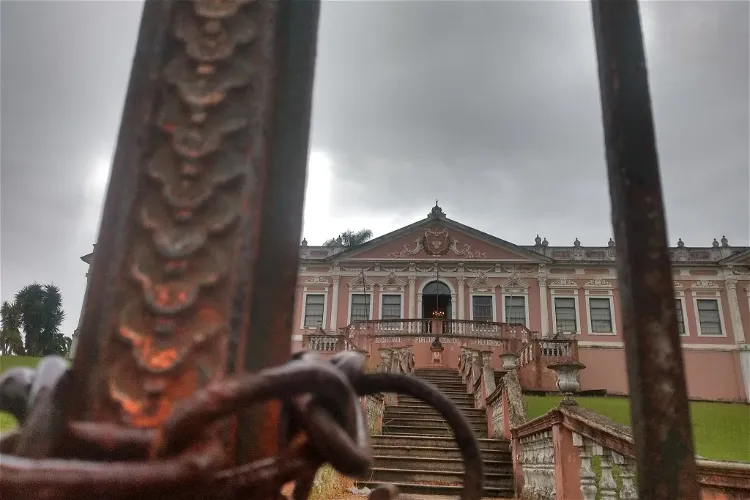
Dom Diogo de Souza Museum
BagéThe Dom Diogo de Souza Museum is situated in the municipality of Bagé, in the state of Rio Grande do Sul, Brazil. This location is significant as it provides a cultural and historical hub within the region, offering visitors a chance to delve into the rich history of Brazil, the state, and the city of Bagé.
Museu de Arte Sacra de Rio Pardo
Rio PardoThe Museu de Arte Sacra de Rio Pardo is a private museum situated in the São Francisco chapel in the city of Rio Pardo, in the state of Rio Grande do Sul, Brazil. The museum is located at São Francisco Street nº 277 and is maintained by the Associação Zeladora Capela São Francisco. This museum is a significant cultural and historical site in the region.
Schmitt-Presser Museum
Novo HamburgoThe Schmitt-Presser Community Museum is a significant cultural institution located in the city of Novo Hamburgo, in the state of Rio Grande do Sul, Brazil. It offers visitors a unique insight into the history and culture of the region, making it a worthwhile destination for those interested in learning more about Brazil's rich heritage.
Museu da Cidade (Manaus)
ManausThe Museu da Cidade de Manaus, or the City Museum of Manaus, is a Brazilian museum situated in the heart of Manaus, the capital city of the Amazonas state. This museum offers a unique opportunity to delve into the rich history and culture of the region.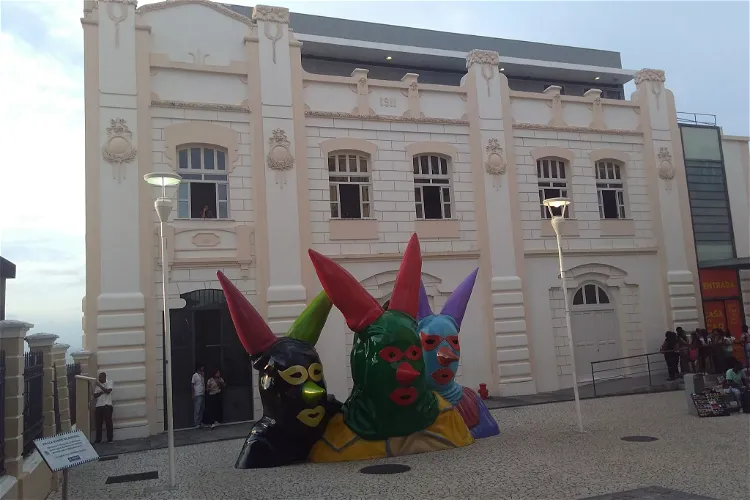
Casa do Carnaval da Bahia
SalvadorThe Casa do Carnaval da Bahia is a museum that provides an interactive and playful narrative of the world's largest street carnival, the Carnival of Salvador. This museum offers a unique opportunity for visitors to learn about the history and cultural significance of this iconic event.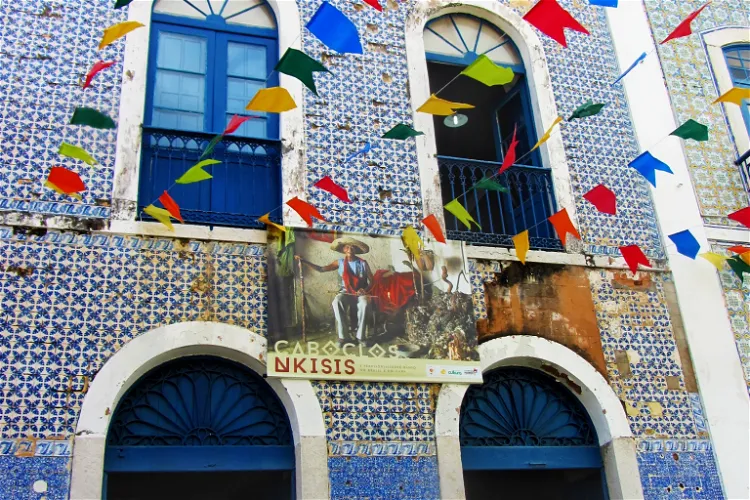
House Nhozinho
São LuísThe Museu Casa de Nhozinho is a museum situated in the historic center of São Luís, Maranhão. It was inaugurated in 2002 and is housed in a four-story mansion built in the early 19th century. The museum's name is a tribute to the popular artist, Antônio Bruno Pinto Nogueira, also known as Nhozinho, who was a master in buriti carving.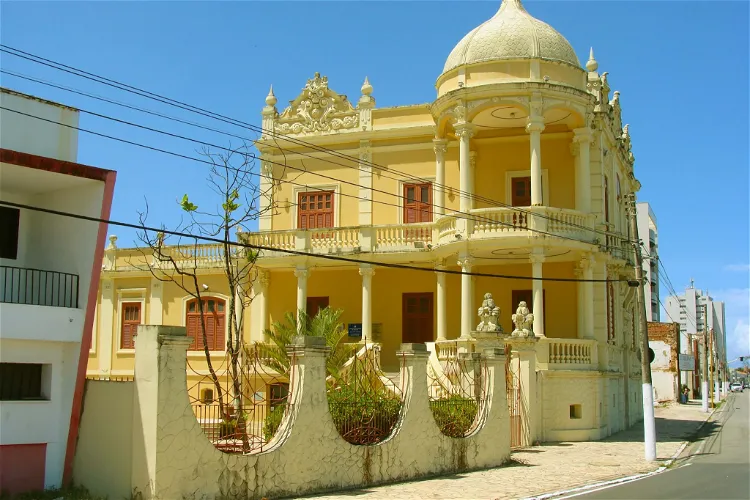
Museu Théo Brandão
MaceióThe Museu Théo Brandão de Antropologia e Folclore is a significant cultural institution in Brazil. It is situated at Avenida da Paz 1490, in the Jaraguá neighborhood in Maceió, the capital of the state of Alagoas. This location is easily accessible and offers visitors a chance to explore the rich cultural heritage of the region.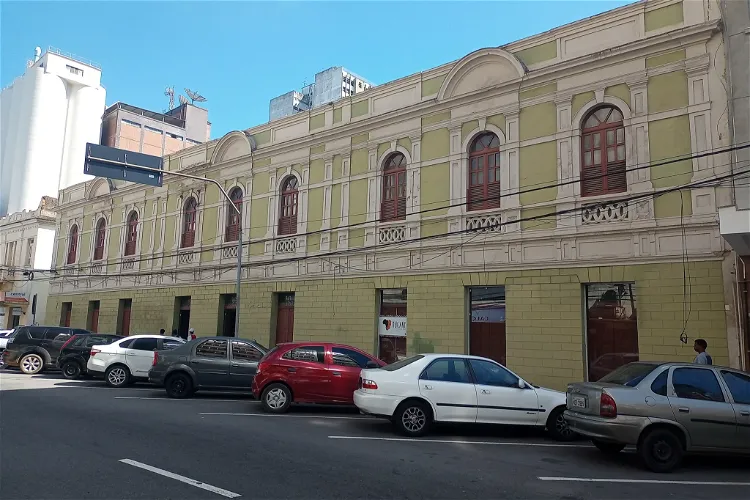
Museu Capixaba do Negro
VitóriaThe Museu Capixaba do Negro "Verônica da Pas", also known as Mucane, is a museum in Brazil. It is situated in the city of Vitória, in the state of Espírito Santo. This museum is a significant cultural institution that focuses on the diffusion and memory of the identity and culture of Afro-descendant peoples.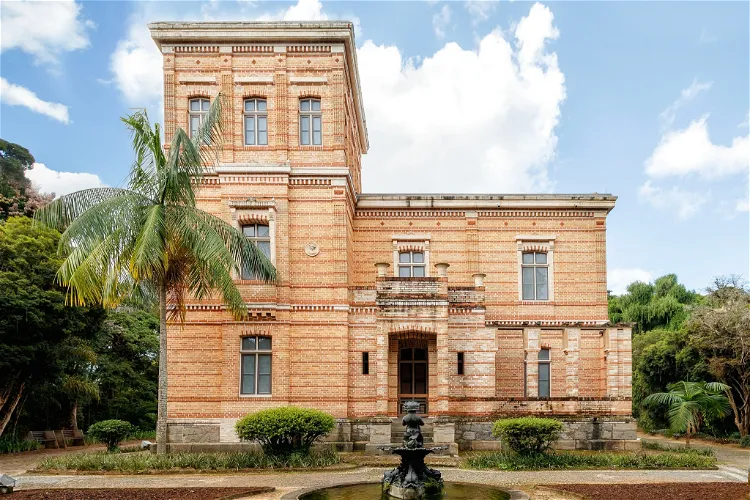
Mariano Procópio Museum
Juiz de ForaThe Mariano Procópio Museum, located in Juiz de Fora, Minas Gerais, Brazil, is a museum that showcases art, history, and natural sciences. It offers a diverse range of exhibits that cater to different interests, making it a versatile destination for tourists.
Museu Dom José
SobralThe Museu Diocesano Dom José, also known as Museu Dom José, is a museum situated in the city of Sobral, in the state of Ceará, Brazil. This museum is a significant cultural institution in the region, attracting a diverse range of visitors.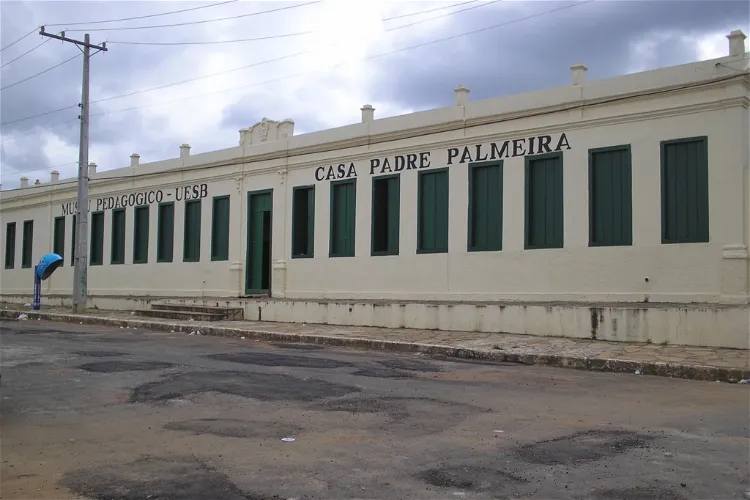
Museu Pedagógico Casa Padre Palmeira
Vitória da ConquistaThe Museu Pedagógico Casa Padre Palmeira is recognized as a Cultural Heritage of the History and Memory of Education in the city of Vitória da Conquista, Bahia. This recognition highlights the museum's significant role in preserving and showcasing the educational history of the region.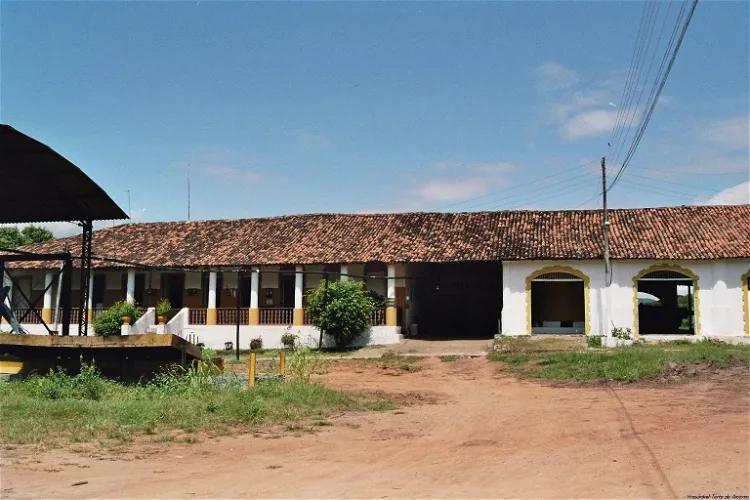
Museu Senzala Negro Liberto
RedençãoThe Museu Senzala Negro Liberto is situated in the Livramento Plantation, within the municipality of Redenção, in the state of Ceará, Brazil. This location is approximately 50 kilometers away from Fortaleza, the state capital. This geographical positioning makes the museum easily accessible for tourists visiting the state capital.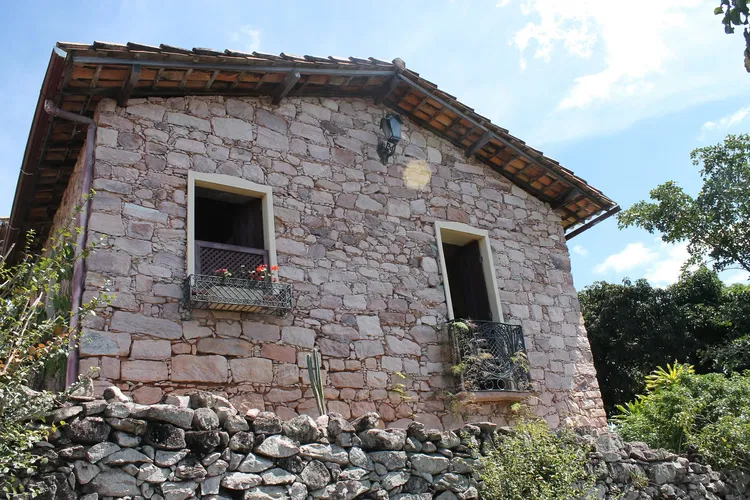
Museu Vivo do Garimpo
MucugêThe Museu Vivo do Garimpo (MVG) is a museum located in the municipality of Mucugê, in the Chapada Diamantina region of the state of Bahia. It was established in 2007 in the area where the Municipal Park of Mucugê is located. This location offers visitors a chance to explore the museum and the park in the same trip, making it a convenient destination for those interested in the history and natural beauty of the region.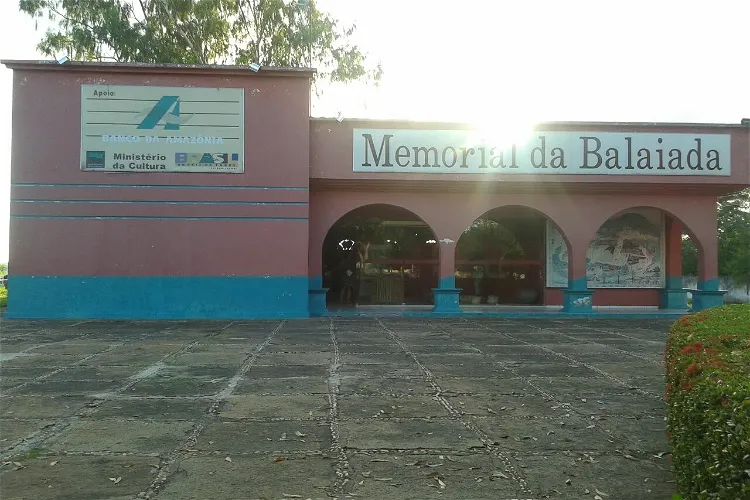
Memorial da Balaiada
CaxiasThe Memorial da Balaiada, located in the city of Caxias, is an educational-cultural center that was inaugurated on June 26, 2004. It is composed of a Museum and a Documentation Center and is situated 365 km from São Luís.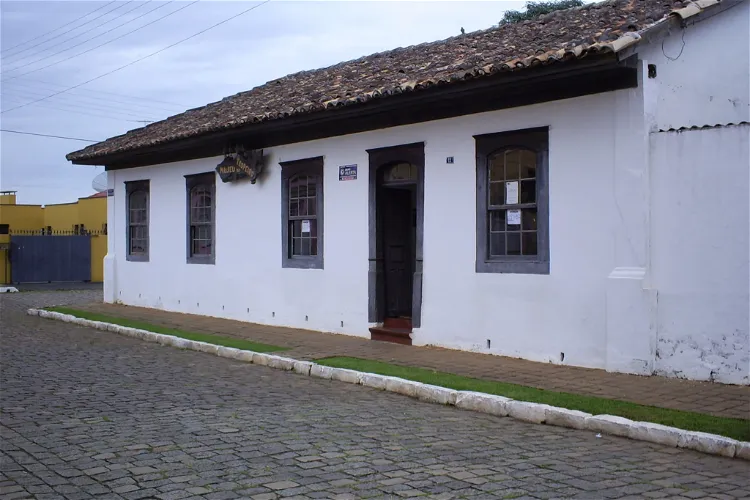
Museu do Tropeiro
ItabiraThe Museu do Tropeiro is situated in Castro, a city nestled in the interior of the state of Paraná. This location provides a unique setting for the museum, offering visitors a chance to explore the history of the region while immersing themselves in the rich cultural heritage of the tropeiro, or muleteer, who traversed the Campos Gerais region in the 18th century.
Museum Cangaço
PiranhasOne of the appealing aspects of the Sertão Museum is its free admission. This allows tourists of all budgets to access the museum's rich collection and learn about the city's history and the cangaço without any financial constraints. It's an opportunity to enrich your knowledge and understanding of the region without any cost.
Museu do Homem do Sambaqui
FlorianópolisThe Museu do Homem do Sambaqui, located in Brazil, is a museum that is primarily dedicated to preserving the natural and cultural history of the region. It showcases a variety of exhibitions that include native animals and human artifacts. These exhibits provide a unique insight into the rich history and biodiversity of the region.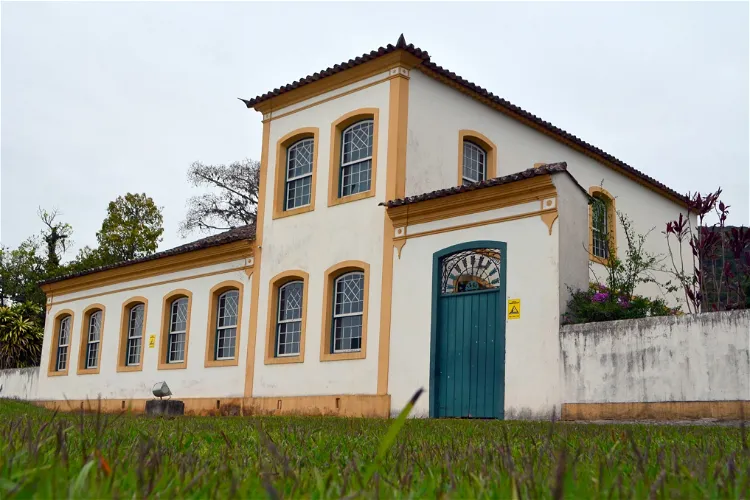
Ethnographic Museum Casa dos Açores
BiguaçuThe Ethnographic Museum Casa dos Açores, also known as the São Miguel Museum, is a Brazilian institution located in São Miguel da Terra Firme, Biguaçu. The museum is primarily dedicated to preserving the Luso-Brazilian memory in the greater Florianópolis region. It is housed in a building dating back to the first half of the 19th century, representing the peak of Azorean-Madeiran culture in São Miguel da Terra Firme.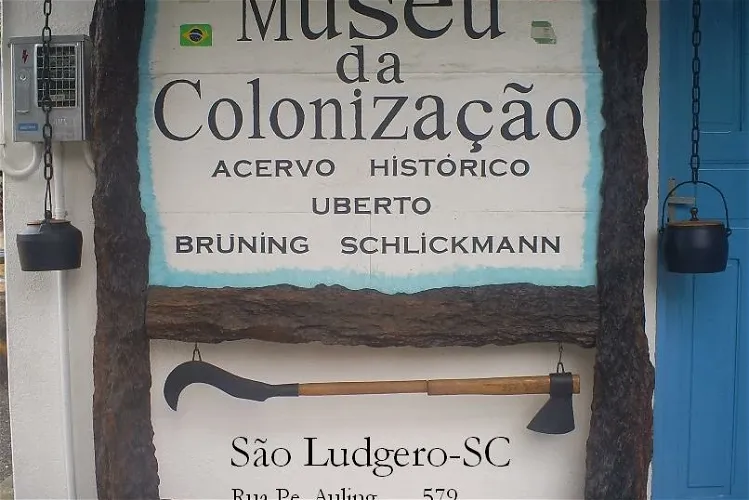
Uberto Museum Brüning Schlickmann
São LudgeroThe Uberto Brüning Schlickmann Colonization Museum, also known as MUBS, is situated in the city of São Ludgero in the state of Santa Catarina, Brazil. This location is significant as it is where the museum's namesake, Uberto Brüning Schlickmann, and his family first settled in the 19th century.
Museu da Imagem e do Som de Cuiabá
CuiabáOne of the main objectives of the Museu da Imagem e do Som de Cuiabá is to preserve the memory of life in Cuiabá and Mato Grosso. The museum houses a collection that provides a glimpse into the past, allowing visitors to understand and appreciate the history and culture of these regions.- 84
Museu Tropeiro Velho
ChapecóThe Museu Tropeiro Velho is a Brazilian museum situated in Linha Boa Vista. This museum is owned by the Fonseca family and is located in the municipality of Chapecó, in the state of Santa Catarina. It offers a unique insight into the local culture and history. 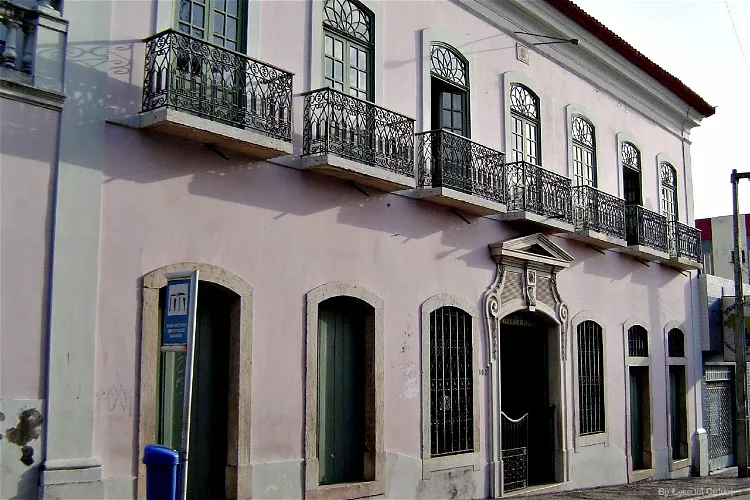
Museu Histórico e Artístico do Maranhão
São LuísThe Museu Histórico e Artístico do Maranhão (MHAM) is a public institution situated in São Luís, within the Solar Gomes de Souza. The museum's mission is to safeguard, promote, and disseminate the cultural heritage of the state, making it a significant location for those interested in understanding the region's history and culture.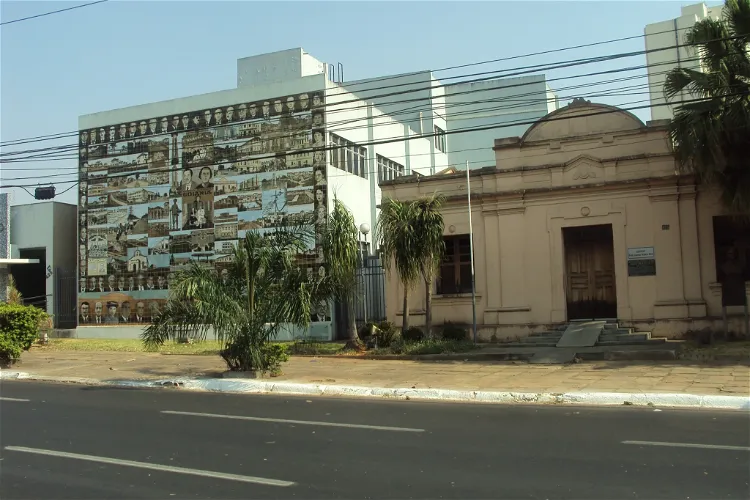
Instituto Histórico e Geográfico de Goiás
SantosThe Instituto Histórico e Geográfico de Santos is situated in the coastal city of Santos, within the Brazilian state of São Paulo. This location offers visitors the opportunity to explore the rich history and geography of the region, while also enjoying the beautiful coastal scenery.- 87
Museu de Arte Indígena
CuritibaThe Museu de Arte Indígena (MAI) is a unique cultural institution located in Curitiba, Paraná. It holds the distinction of being the first private museum in Brazil that is dedicated solely to the artistic production of Brazilian indigenous people. This focus makes it a unique destination for those interested in indigenous art and culture. - 88
Casa do Sertanista
São Miguel ArcanjoThe Sertanista House, also known as Caxingui House, is a significant historical site located in the neighborhood of Caxingui, São Paulo. This residence, built in the middle of the 17th century, is a prime example of Brazilian colonial architecture. It showcases several typical characteristics of the bandeirista house, including walls made of rammed earth, a four-fluted roof, and an earthen floor. The house's history and architectural style make it a fascinating destination for those interested in Brazil's colonial past. - 89
Museu Histórico Casa do Imigrante
Bento GonçalvesThe Museu do Imigrante, located in Bento Gonçalves, Rio Grande do Sul, Brazil, is a public, municipal museum with a focus on history and immigration. It is particularly dedicated to the history of immigration from the northeastern region of the state of Rio Grande do Sul. The museum is administratively linked to the Casa das Artes Foundation and is an important repository of museum, archival, and bibliographic collections about the history of the museum and immigration. - 90
Museu Aracy Paraguassú
ItaitubaThe Museu Municipal Aracy Paraguaçu, also known as the Aracy Paraguassú Municipal Museum, is a historical museum located in the city of Itaituba, Pará, Brazil. It was formally established on October 18, 2006, although it had been operational since 1993. The museum was an initiative of Professor Regina Lucirene Macedo de Oliveira, whose family kept documentary records of the history of the municipality of Itaituba. - 91
Museu Ruy Menezes
BarretosThe Ruy Menezes Historical, Artistic and Folkloric Museum is located in the city of Barretos, São Paulo. It plays a crucial role in preserving the city's memory by housing important documents and objects from the city's history. This museum provides a unique opportunity for visitors to delve into the rich history and culture of Barretos. - 92
Casa Costa e Silva Museum
TaquariThe Costa e Silva Museum, also known as the Casa Costa E Silva Museum, is a significant cultural institution located in the municipality of Taquari, in Rio Grande do Sul. It is part of the State Museum System of Rio Grande do Sul, which is a network of museums that work together to preserve and promote the cultural heritage of the region. - 93
Jewish Museum
Rio de JaneiroThe Jewish Museum of Rio de Janeiro, established in 1977, serves as a cultural hub dedicated to the preservation of Jewish memory and culture. It is a place where visitors can learn about the history and traditions of Judaism in all its aspects -- religious, cultural, and historical. The museum's mission is to keep alive the memory of the Jewish community in Rio de Janeiro and to promote understanding of Jewish culture and history. 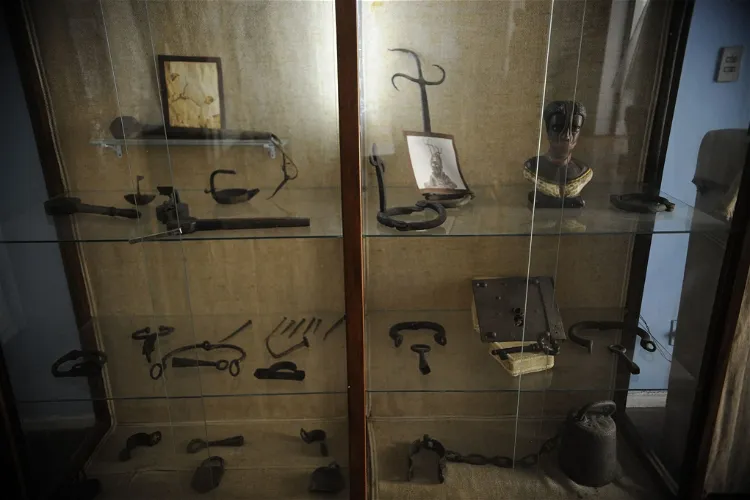
Museu do Negro
São LuísThe Museu do Negro, located in Rio de Janeiro, is a museum dedicated to the history of black people in Brazil. It particularly focuses on aspects related to religion. This museum provides a unique opportunity for visitors to delve into the rich and diverse history of black people in Brazil, with a special emphasis on their religious practices and beliefs.- 95
Museum Bi Moreira
LavrasThe Museu Bi Moreira is a historical museum situated on the historic campus of the Federal University of Lavras. It was officially founded on September 9, 1983. The museum's location within the university campus adds to its historical significance and provides a unique setting for visitors. - 96
Museum der Pommerschen Einwanderung
Santa Maria de JetibáThe Museum der Pommerschen Einwanderung, also known as Museu da Imigração Pomerana, is located in Santa Maria de Jetibá. It is dedicated to the history of Pomeranian immigration to the state of Espírito Santo in Brazil. The museum provides a detailed account of the journey and settlement of these migrants, offering a unique insight into this significant chapter of Brazilian history. - 97
Instituto Histórico de Jaboatão
Jaboatão dos GuararapesThe Instituto Histórico de Jaboatão (IHJ) is a non-profit organization that focuses on the study, discussion, investigation, and scientific exploration of the history, geography, and ethnography of Brazil, Pernambuco, and particularly the municipality of Jaboatão dos Guararapes. It aims to preserve the memory of the region for future generations and is the primary source of research about the history of the municipality. - 98
Anthropology Museum of the Paraíba Valley
JacareíThe Anthropology Museum of the Paraíba Valley is situated at 143 Quinze de Novembro Street, in the heart of Jacareí. It is housed in a listed historical building known as Solar Gomes Leitão. This location not only provides easy access for visitors but also adds a historical charm to the museum experience. - 99
Museu Etno-Arqueológico
ItajaíThe Museu Etno-Arqueológico de Itajaí, located in Itajaí, is a museum that focuses on the prehistoric archaeology of the sambaqui and the rural ethnography of the lower Itajaí-Mirim River Valley, in the northern coast of Santa Catarina. This museum provides a unique opportunity for visitors to delve into the prehistoric and rural cultural aspects of the region. - 100
Museu Paleoarqueológico e Histórico Prefeito Bertoldo Jacobsen
TaióThe Museu Paleoarqueológico e Histórico Prefeito Bertoldo Jacobsen is a Brazilian institution dedicated to the preservation and promotion of the cultural heritage of Taió, a municipality in Santa Catarina. The museum was inaugurated on December 18, 2004, and is named in honor of the first mayor of the municipality. It focuses on themes of paleontology, archaeology, and local history.